Litter Box for Rabbit: The Benefits of Litter Training and How to Do It Successfully
Unlock the benefits of litter training your rabbit. Learn how to do it successfully for a cleaner, happier pet experience. Enjoy reading our blog about Litter Box for Rabbit!
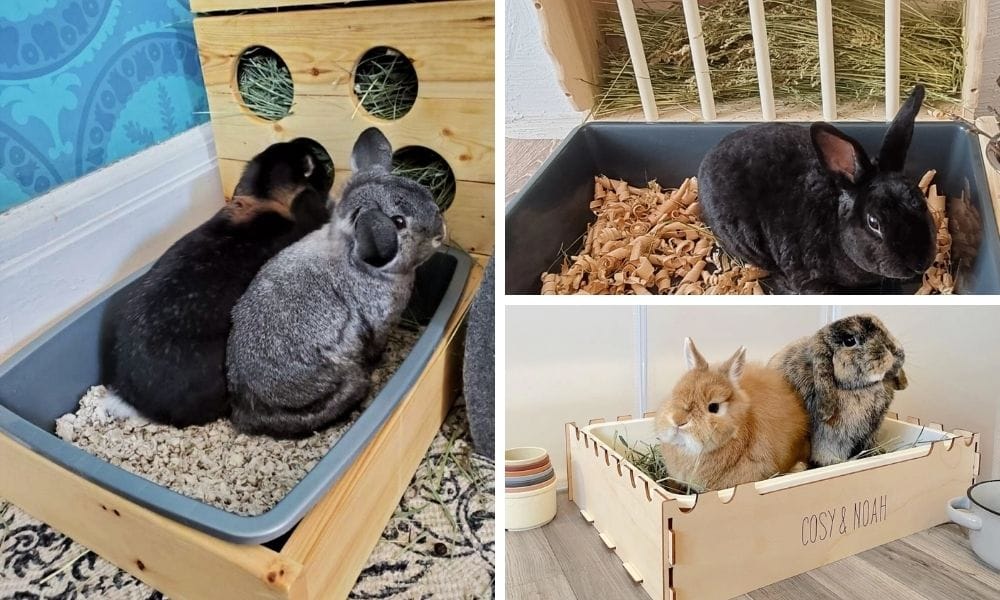
Key Takeaways:
- Litter training your rabbit can save you time and money, making cleaning easier and more efficient.
- Using the right type of litter and litter box can prevent health issues like respiratory problems in rabbits.
- Consistency and patience are key in successfully litter training your rabbit, enhancing your bond with your pet.
Rabbits are not just adorable; they're smart, clean animals that can be trained to use a litter box much like cats. Litter training your rabbit not only keeps your home cleaner and odor-free but also contributes to the well-being of your furry friend. In this comprehensive guide, we'll walk through the benefits of litter training your rabbit and provide a step-by-step approach to do it successfully.
Understanding the Importance of Litter Training
Litter training your rabbit is more than just a convenience; it's a crucial aspect of rabbit care. A well-trained rabbit is easier to manage and less likely to leave surprises around your home. This training helps maintain cleanliness and order, reducing the time you spend cleaning up after your pet. Moreover, it significantly cuts down on the odor that can emanate from rabbit urine, keeping your home smelling fresh.
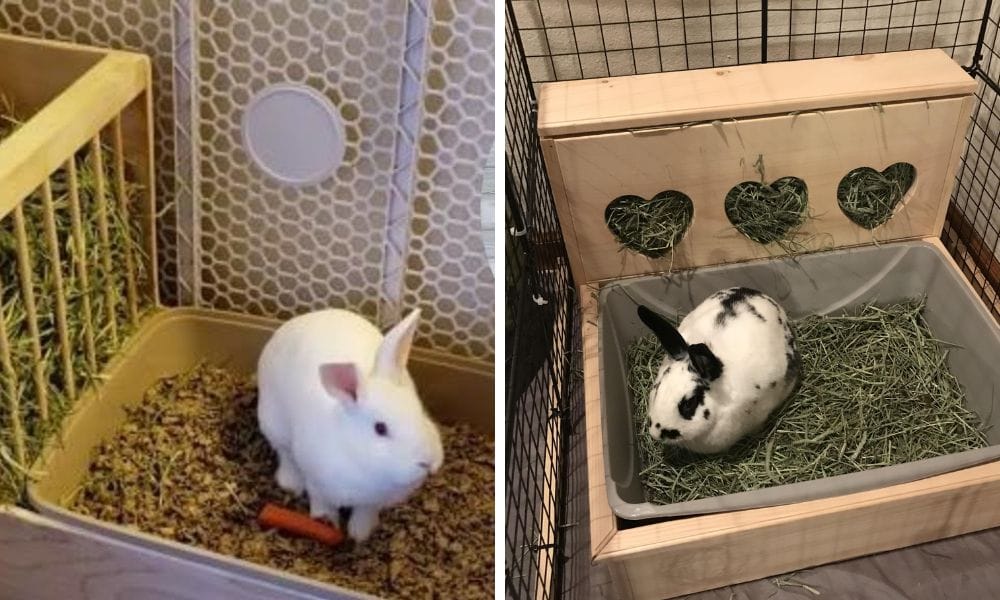
Choosing the Right Bunny Litter Box
When selecting a bunny litter box, size and accessibility are paramount. Rabbits need enough room to comfortably move around inside the box. Litter boxes come in various sizes, so it’s important to compare different sizes and select one that is appropriate for your rabbit’s breed and the number of rabbits sharing the box. A low-sided litter box is ideal as it allows easy access, especially for younger or smaller rabbits. Covered litter boxes might seem like a good idea for controlling odor, but they can make some rabbits feel trapped. It’s essential to choose a box that makes your rabbit feel safe and secure, and only certain types of litter boxes are allowed or suitable for rabbits to ensure their safety and comfort.
An ideal rabbit litter box offers features that cater to both the pet and the owner’s needs, including ease of cleaning, durability, and appropriate figure (dimensions) to fit the pet comfortably. We recommend choosing larger sizes for bigger breeds or multiple rabbits, and smaller sizes for single or dwarf rabbits. Some of the best litter boxes can be found by repurposing storage bins or containers, which are often available at hardware stores or online. Many suitable litter boxes or storage bins can also be purchased on Amazon. Be sure to check items and add your preferred rabbit litter box and accessories to your online shopping cart for a convenient purchase experience. Additionally, some litter boxes are designed to fit inside cages or enclosures, so it’s important to choose a box that fits your rabbit’s cage for convenience and ease of cleaning.
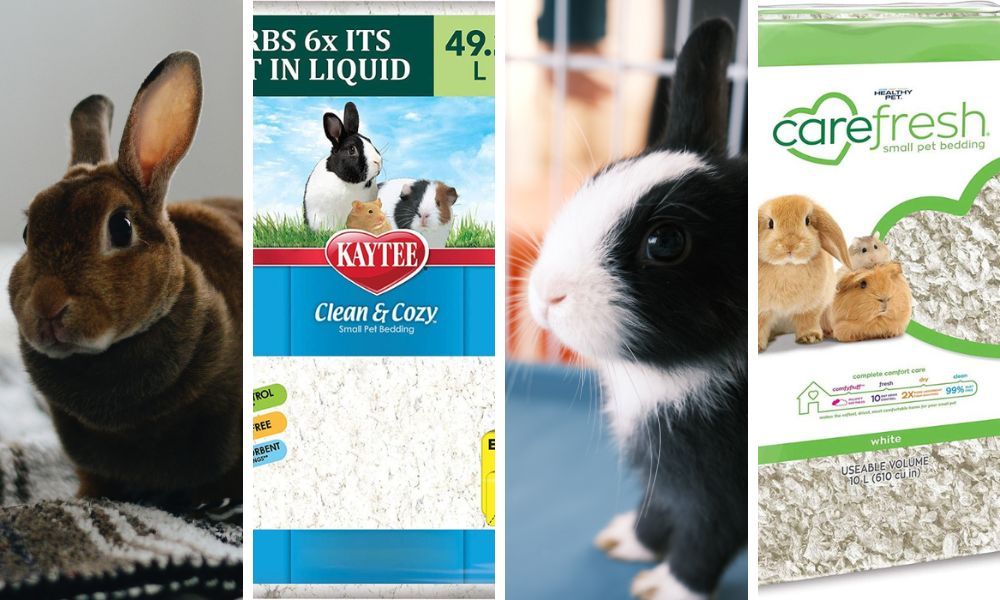
Selecting Appropriate Litter
The type of litter you choose is crucial for the health of your rabbit. Avoid clumping or dusty cat litter as it can cause respiratory issues and other health problems in rabbits. Never use cedar shavings, as they can release harmful chemicals and pose health risks to rabbits. Paper pellets, wood pellets, or paper bedding are excellent choices because they are absorbent and safe if ingested. Rabbits may ingest some litter materials, so always select safe, non-toxic options. Incorporating paper litter, especially when using pine pellets covered with a layer of paper bedding, enhances absorbency, provides gentleness on the rabbit’s feet, and helps control odor naturally, making it an ideal combination for a rabbit’s litter box. Newspaper can also be used as a budget-friendly bedding option, but it does not control odor as well and may need to be changed more frequently. These materials are also cost-effective and easy to clean up.
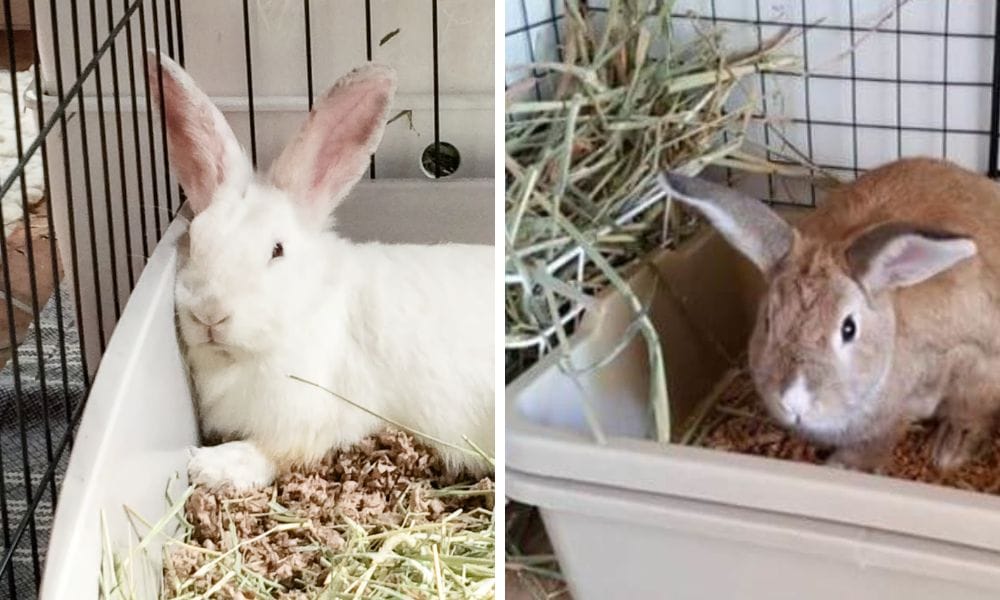
The Training Process
Training your rabbit to use a litter box requires patience and consistency. To begin, properly set up the litter box by choosing the right size and design, and place it in your rabbit’s favorite corner to go pee. Rabbits often choose one spot in their enclosure to do their business, so observing your bunny’s habits can help you decide the best place for the litter box. Many rabbits like to sit in their litter box while eating or resting, so make sure it is comfortable and clean. Once the box is in place, encourage your rabbit to explore it by placing hay or a few treats inside. Giving your rabbit a clean, fresh litter box regularly during training is important for maintaining hygiene and encouraging consistent use.
Optimizing Your Rabbit's Litter Box Placement
When setting up a litter box for your rabbit, think of it as real estate: location, location, location! Placing the litter box in your bunny's favorite corner of their enclosure not only makes it super easy for them to adapt, but it also taps into their natural instincts to use one area consistently for their bathroom needs. Ensure the spot is quiet, safe, and always accessible, which encourages your furry friend to maintain good litter habits.
Moreover, consider the type of enclosure your rabbit has. If it’s spacious, you might want to experiment with multiple boxes. This is particularly useful if your bunny loves to roam around. Multiple boxes mean they don’t have to travel far to find a spot, reducing accidents outside the designated areas. Remember, a bunny parent's goal is to make each corner of the cage as inviting as possible, which can significantly ease the process of litter training.
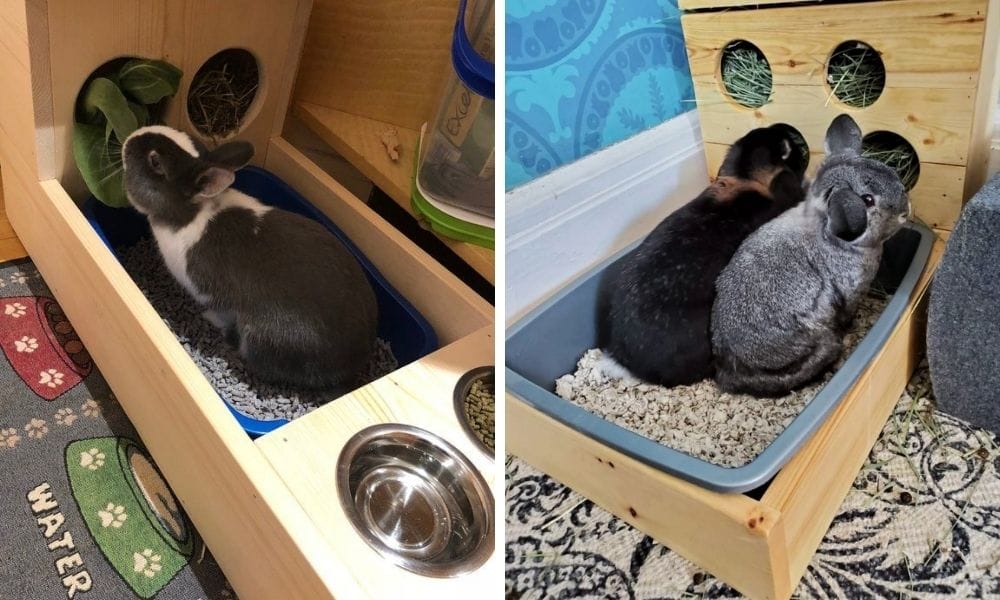
Adjusting Litter Box Size and Type for Different Rabbit Ages
When it comes to ensuring the comfort and effectiveness of a litter training regimen for your pet rabbit, the size and type of the litter box play pivotal roles. For young bunnies, a smaller, shallow litter box makes it easier for them to hop in and out without struggle. As they grow, transitioning to a larger box ensures they have enough room to move around comfortably. This gradual adjustment helps maintain the cleanliness of the area, as a cramped box could discourage your rabbit from using it, leading to accidents outside the designated area.
Moreover, the type of litter box can significantly influence training success. Young rabbits might find covered litter boxes intimidating or too restrictive, which could deter them from entering. Starting with an open, easily accessible litter box encourages them to adopt the habit. As they mature and seek more privacy, introducing a covered litter box can cater to that need while keeping the surrounding area tidy from scattered litter. Always ensure the transition is smooth to keep your bunny confident and secure in their habits.
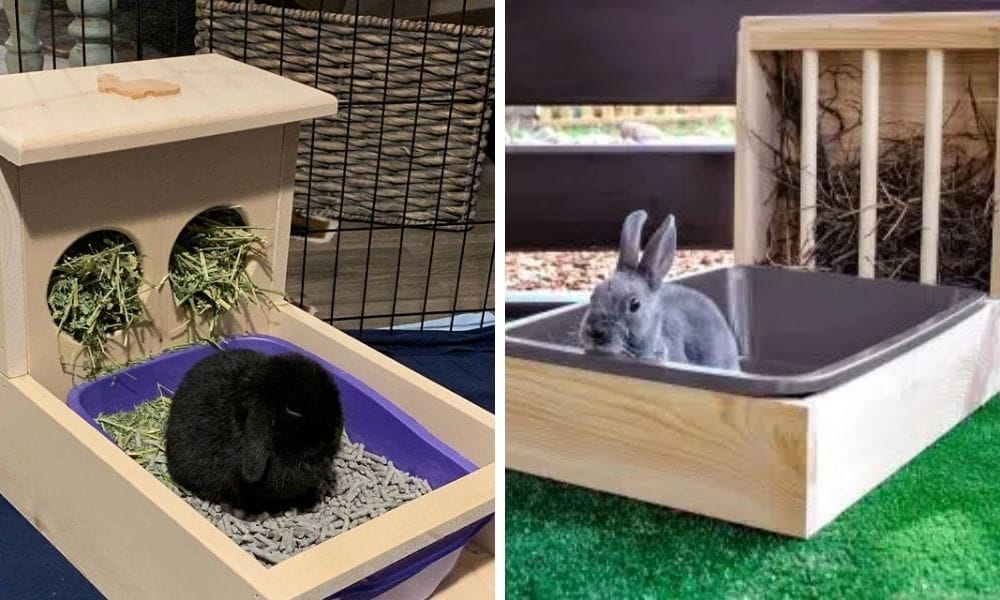
Integrating Litter Training into Daily Rabbit Care
Integrating litter training into your daily care routine can transform your experience as a bunny parent. By setting aside time each day for training and reinforcement, you create a consistent schedule that helps your rabbit understand expectations. This consistency not only aids in quicker learning but also integrates seamlessly into other care activities like feeding and playtime. As you scoop the litter box or refresh the paper pellets, use this time to interact with your rabbit, reinforcing the training with gentle guidance and treats.
Moreover, daily interaction during litter box maintenance allows you to monitor your rabbit’s health more closely. Regular cleaning helps prevent the buildup of ammonia from urine, which can cause respiratory issues in small animals. Be sure to check the litter box and your rabbit’s waste for any changes, as this can help you identify potential health issues early. By keeping the litter box clean and observing any changes in your rabbit’s waste, you can catch health issues early. This proactive approach not only ensures a hygienic environment but also deepens the bond between you and your pet, making every moment around the litter box an opportunity for connection and care.
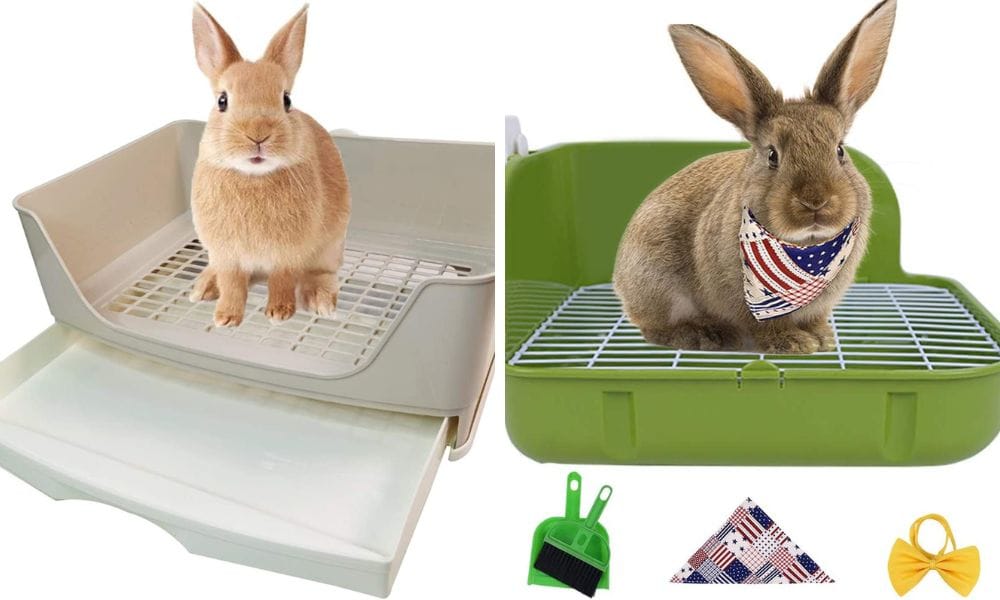
Transitioning from Kitten to Rabbit Litter Boxes
When you think about litter training, cats might spring to mind first, but rabbit owners are hopping on the bandwagon too. Transitioning from a cat litter box to one more suitable for a rabbit involves considering the size and design that best fits a bunny’s needs. Unlike cats, rabbits often prefer a low-entry litter box for easy access, especially as they age. Ensuring the box is spacious enough to accommodate the rabbit while it moves around is crucial, as bunnies love to have enough room to dig and turn.
Some litter boxes also feature a wire floor grid, which separates waste from your rabbit and allows droppings and urine to fall through. This grid design makes cleaning easier and helps maintain cleanliness, especially for larger breeds.
Moreover, while many cat litter boxes are covered to control odor, this design might not suit all rabbits, who are sensitive to strong smells and confined spaces. A covered litter box can also trap ammonia fumes, which can lead to respiratory issues in rabbits. Therefore, opting for an open litter box can significantly enhance your bunny’s comfort and health. It’s also super easy to clean, making it a practical choice for the busy bunny parent who wants to maintain a fresh and inviting living space for their pet.
Navigating Common Challenges in Rabbit Litter Training
When embarking on the journey of litter training your bunny, you might hit a few bumps along the road. One common challenge is the rabbit’s natural tendency to use corners of their enclosure as a toilet. To tackle this, strategically place the litter box in your rabbit’s favorite corner. This makes the transition smoother, as it aligns with their natural instincts. Additionally, dealing with odor can be a hurdle. Regular cleaning of the litter box and using paper pellets or wood pellets can significantly reduce unpleasant smells, making the environment more pleasant for both you and your pet. Be sure to change the litter box contents at least once a week, or more often if needed, to maintain cleanliness and control odor.
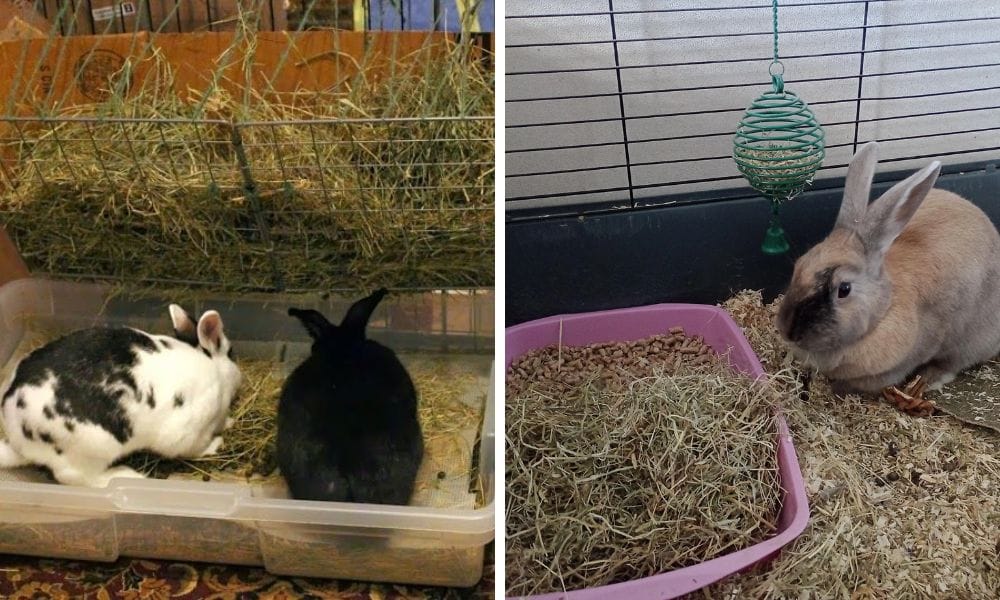
Another hurdle is the rabbit’s occasional stubbornness or reluctance to adopt the litter box. Patience is key here. Reinforcing good behavior with treats and gentle encouragement can work wonders. Remember, every bunny has its own personality and pace of learning. If traditional methods falter, try changing the type of litter. Some rabbits prefer the texture and diggability of paper bedding or hay over other materials. Observing your rabbit’s preferences and adjusting accordingly can turn a frustrating experience into a successful endeavor.
Exploring Different Types of Litter for Your Rabbit
When it comes to choosing the best litter for your rabbit, the variety can be as diverse as the bunnies themselves. Paper pellets, wood pellets, and paper bedding are popular choices due to their high absorbency and low dust, which helps prevent respiratory issues in sensitive rabbits. The typical contents of a rabbit litter box include bedding, hay, and waste, all of which need regular cleaning and replenishing to maintain hygiene. Paper pellets, in particular, are eco-friendly and super easy to clean, making them a favorite among bunny parents. They soak up urine efficiently and control odor well, ensuring a fresh environment for both the pet and the owner.
Rabbits enjoy doing many things in their litter box, such as digging, organizing hay, eating, and even napping, so it's important to choose a container that accommodates these activities. However, not all litters are created equal when considering the health and comfort of your rabbit. While wood pellets offer a natural and biodegradable option, they can be hard on rabbit feet if not used with a soft top layer. On the other hand, paper bedding is gentle and can be a cozy addition to the litter pan, but it might not control odor as effectively as pellets. Choosing the right type of litter involves balancing cleanliness, rabbit comfort, and ease of maintenance to create the best living space for your furry friend..
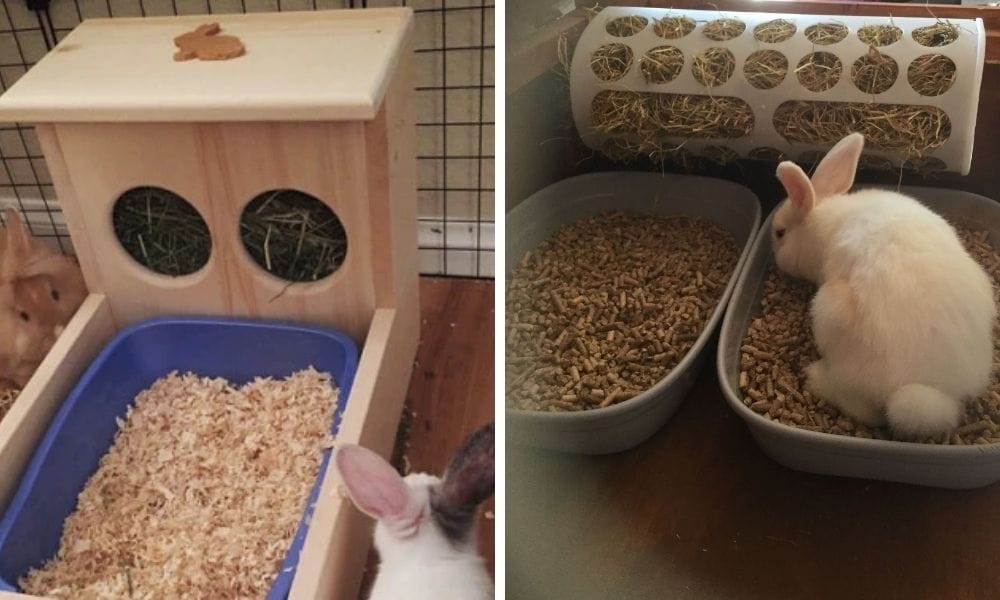
The Role of Litter Boxes in Rabbit Hygiene and Health
A well-maintained litter box is crucial for the hygiene and overall health of your rabbit. Ensuring the litter box is spacious enough to comfortably accommodate your rabbit is essential. Rabbits need enough room to move around, dig, and do their business without feeling cramped. This not only helps in keeping the litter box clean but also encourages your rabbit to use it consistently. A covered litter box can provide privacy and help contain odors, but make sure it has adequate ventilation to prevent ammonia build-up from urine.
Regular cleaning of the litter box is paramount to prevent the accumulation of ammonia and bacteria, which can lead to health issues like urinary tract infections. It’s recommended to scoop the litter box daily and perform a deep cleaning weekly. This involves replacing all the litter, washing the box with a mild, pet-safe detergent, and drying it thoroughly before refilling with fresh litter. To keep the litter box clean and inviting, regularly add fresh hay or bedding as needed. Providing fresh hay in the litter box is important, as it promotes healthy digestion, prevents odors, and keeps your rabbit comfortable. By maintaining a clean and inviting litter box, you encourage your rabbit to maintain good hygiene habits, contributing to a healthier and happier pet.
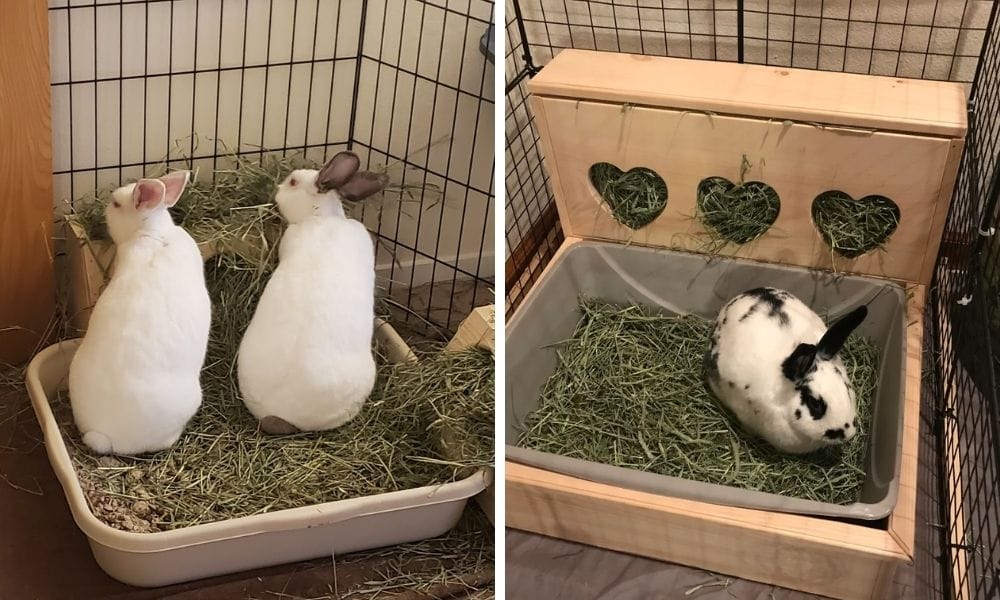
Designing a Litter Box Setup for Multiple Rabbits
If you’re a proud parent to multiple furry friends, managing a clean and efficient litter setup can seem like a juggling act. The golden rule here is: more is merrier. Having multiple boxes in various locations around your home helps prevent territorial disputes and ensures each rabbit has access to a clean litter area at all times. This setup not only promotes good hygiene but also reduces stress among your rabbits, fostering a harmonious living environment.
Moreover, when choosing litter boxes for multiple rabbits, size and accessibility are crucial. For a group of bunnies, a large, custom-sized litter box allows them to share the space comfortably, ensuring each rabbit has enough room to move and use the box without crowding. This is especially important in preventing any potential health issues like urine scald or respiratory problems from ammonia buildup. Regular maintenance, such as daily scooping and weekly deep cleaning, will keep these larger systems easy to manage and odor-free, ensuring your bunnies’ home is as welcoming and comfortable as possible.
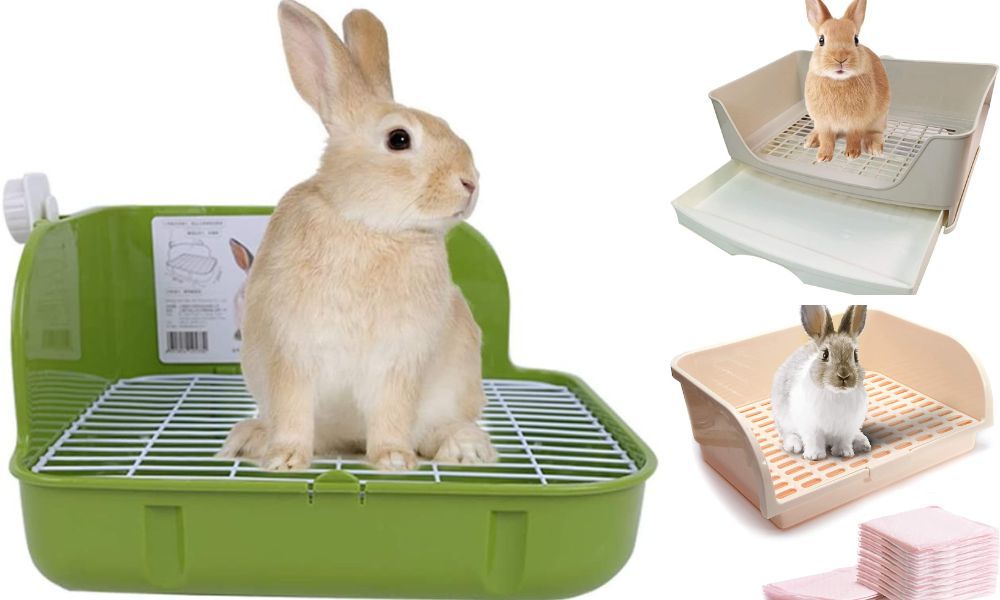
Choosing the Right Litter Material for Optimal Health
Selecting the right litter material is not just about keeping the cage clean; it's about ensuring the health and well-being of your furry friend. Paper pellets, paper bedding, or wood pellets are often recommended for rabbits due to their high absorbency and low dust content. These materials help in minimizing the risk of respiratory issues, which bunnies are prone to. Additionally, these litters are easy to clean up and replace, making them a convenient option for pet owners.
Another aspect to consider is the ingestion risk associated with certain types of litter. Rabbits tend to eat hay from their litter box, so it's crucial to use a non-toxic material that won't harm them if ingested. Paper-based litters, such as paper pellets or shredded paper, are safe options that also help in controlling odor effectively. By choosing the right litter material, you not only keep your rabbit's living space tidy but also contribute significantly to its overall health and happiness.
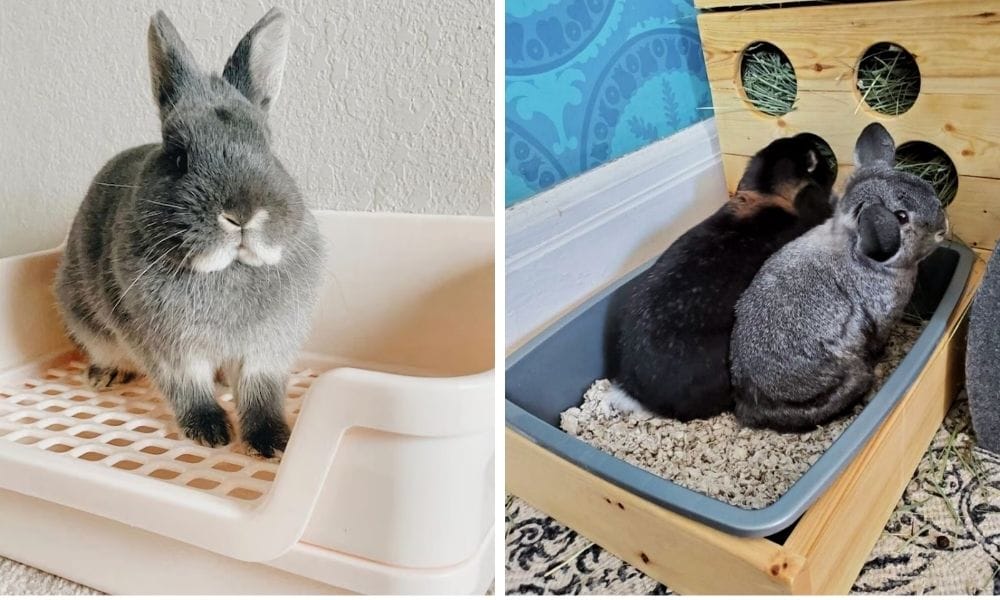
Choosing Eco-Friendly Litter Options
In today's eco-conscious world, selecting eco-friendly litter options for your rabbit is not just a choice but a responsibility. Biodegradable materials like paper pellets or wood pellets are excellent choices that minimize environmental impact. These materials are not only easy to clean but also safe for your rabbits if ingested during their natural digging behavior. Additionally, using eco-friendly litter supports sustainable practices, reducing the ecological footprint of pet care.
Transitioning to eco-friendly litter also involves educating yourself about the different options available at your local pet store. Many brands now offer litter made from recycled paper, wood, or even plant-based materials that are specifically designed for small animals. These products often come with the added benefit of being virtually dust-free, which is crucial for maintaining good respiratory health in your bunny. By choosing these products, you not only contribute to a healthier planet but also ensure a safer living space for your pet.
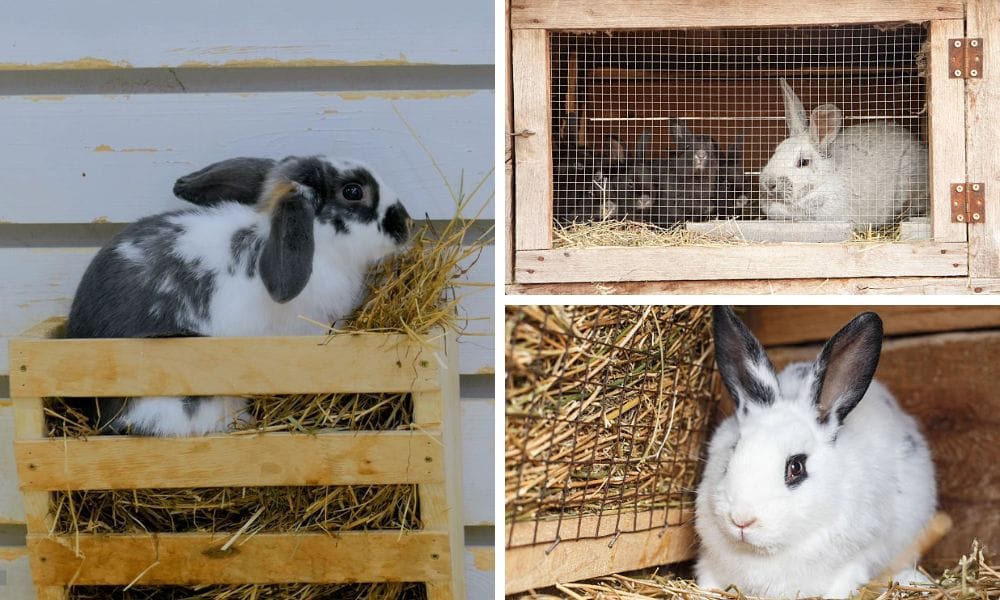
Creating a Stimulating Environment Around the Litter Box
The placement and environment of your rabbit’s litter box can dramatically affect their willingness to use it. Rabbits are naturally curious and intelligent animals, requiring an environment that stimulates their instincts while providing comfort. Placing the litter box in a quiet corner where your rabbit feels safe yet can still observe its surroundings can encourage regular use. This strategic placement taps into the rabbit's natural preference for eliminating in a secure, undisturbed spot.
Additionally, enriching the area around the litter box with toys and safe chewing options like hay boxes can make the space more inviting. Rabbits often eat hay while they're in their litter box, so placing a hay rack nearby serves a dual purpose—it encourages litter use and ensures they get their necessary fiber intake. This setup not only keeps your rabbit happy and engaged but also integrates their natural behaviors with the training process, making it a seamless part of their daily routine.
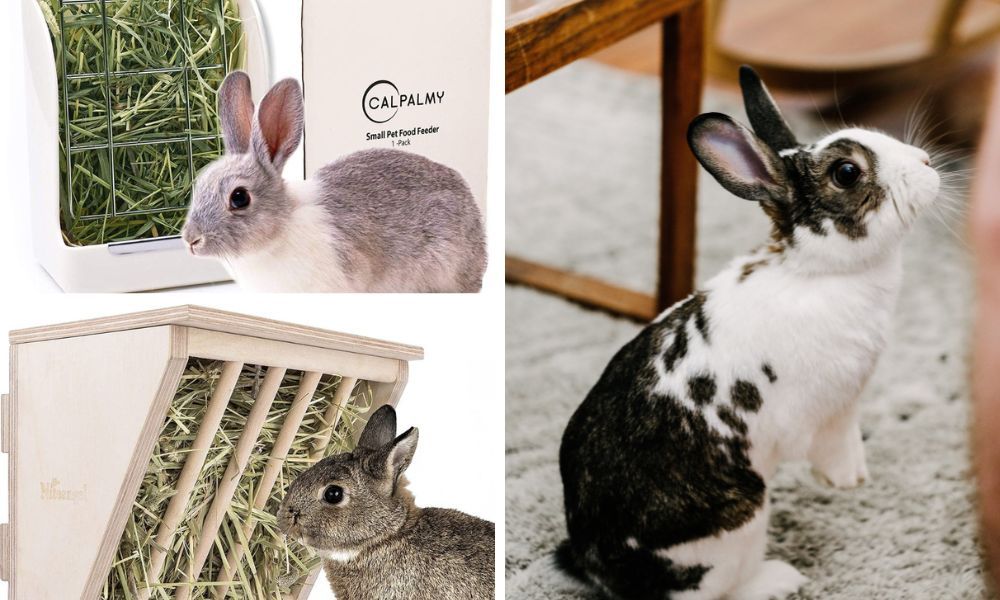
Choosing the Right Litter Material for Your Rabbit
Selecting the appropriate litter material is crucial for your rabbit's health and cleanliness of the home. Paper pellets, paper bedding, or wood pellets are excellent choices as they are highly absorbent and keep odors at bay. These materials are also easy to clean, making your life simpler and ensuring the litter box doesn’t become a dreaded chore. Avoid using cat litter, as some types can cause respiratory issues in rabbits due to dust or added chemicals.
Furthermore, the right litter material can save you so much money in the long run. Materials like paper pellets are not only effective at controlling odor and soaking up urine, but they're also biodegradable and often more affordable than other types of small animal litter. This makes them an environmentally friendly and economical choice for conscientious bunny parents. Always ensure there's enough room in the litter pan for your rabbit to dig around a bit, as this mimics their natural behavior and keeps them engaged with their litter box.
Reinforcing Good Behavior
Positive reinforcement is key in litter training. Whenever your rabbit uses the litter box, reward them with a treat or gentle petting. This reinforcement helps your rabbit associate the litter box with positive experiences. Consistency in this training phase is crucial; keep the litter box clean and inviting, and never punish your rabbit for accidents. Instead, gently guide them back to the litter box to reinforce where you want them to go.
Maintaining the Litter Box
Keeping the litter box clean is essential for encouraging your rabbit to continue using it. Rabbits are clean animals and are discouraged by a dirty litter box. Regularly remove soiled litter and provide a fresh supply to keep the box appealing. This not only promotes good litter habits but also helps prevent the development of odors and maintains a healthy environment for your pet.
Health Benefits
A clean and well-maintained litter box reduces the risk of your rabbit developing diseases associated with unhygienic conditions. Urine can corrode a rabbit's feet if left in contact for too long, leading to sore hocks, a painful condition for your bunny. Additionally, using the right type of litter minimizes the risk of respiratory issues, making litter training not just a matter of convenience but also a crucial health consideration.
Bonding Through Training
Litter training your rabbit can also be a bonding experience. Spending time training your rabbit strengthens your relationship, building trust and understanding between you and your pet. This interaction enhances your rabbit's quality of life and can make other aspects of handling and care easier as your rabbit learns to trust you more.
Summary
Litter training your rabbit is a beneficial practice that enhances the cleanliness of your home, the health of your rabbit, and the bond between you and your pet. By choosing the right litter box and litter, and by being patient and consistent in your training approach, you can successfully litter train your rabbit. Remember, a clean, well-maintained litter box and positive reinforcement are key factors in successful litter training.
FAQ
Q: How long does it typically take to litter train a rabbit? A: The duration varies depending on the individual rabbit. Some might learn in a few weeks, while others might take a couple of months. Consistency and patience are crucial.
Q: Can older rabbits be litter trained? A: Yes, older rabbits can be trained, although it might take a little longer than with younger rabbits. The key is consistency and patience.
Q: What should I do if my rabbit stops using the litter box? A: First, ensure the litter box is clean. If it is, consider any recent changes in your home that might be causing stress or discomfort. Re-establishing routine and positive reinforcement can also help.

